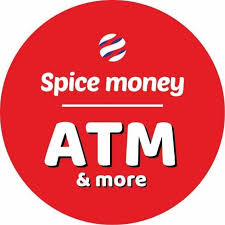Banking services are essential for managing everyday financial needs, yet access remains limited in several parts of the country. In response, the mini ATM service has emerged as a practical alternative, offering banking functions in areas where conventional ATMs and branches may not be available. This system operates through authorized agents or business correspondents and delivers a simplified version of traditional ATM services.
One of the key advantages of the mini ATM service is that it works even in remote or low-infrastructure zones. Paired with micro ATM bank solutions, these devices bring financial services closer to people who otherwise would have to travel long distances to reach a physical bank branch.
As financial inclusion becomes a national priority, both mini ATM service providers and micro ATM bank models continue to support the need for accessible and affordable financial tools for underserved communities.

What is a Mini ATM Service?
A mini ATM is a portable device that allows users to perform basic banking functions. These include withdrawing cash, checking account balances, and sometimes depositing money. The device is usually operated by an agent authorized by a financial institution, helping extend banking services to areas without full-fledged branches.
The mini ATM service does not require complex infrastructure. It can be used with biometric verification or a debit card and PIN, ensuring that the process remains secure and convenient. With minimal setup and quick transaction capabilities, this service allows more people to access banking functions as and when needed.
The Role of Micro ATM Bank in Expanding Access
Functionality and Reach
Micro ATM bank systems are specifically designed for use by business correspondents or local agents. These devices can connect to banking networks via mobile networks, making them ideal for use in rural and semi-urban settings. While their functionality may be limited to basic transactions, the purpose is not to replicate full-service ATMs but to offer essential banking features where there are none.
The simplicity of micro ATM bank devices allows them to be deployed quickly, offering essential financial services without the high cost or logistical complexity of a full-scale ATM installation.
Secure and Verified Transactions
Most micro ATM bank services operate on verified systems that require user authentication through Aadhaar-linked biometrics or PINs. This adds a layer of security while ensuring compliance with banking standards. Transactions are processed in real-time, with instant receipts and confirmations, which makes the service reliable and trustworthy.
Benefits of Mini ATM Services
The mini ATM service offers a number of benefits for both operators and customers. Here are some of the key advantages:
- Accessibility in Remote Areas: Mini ATMs can be placed in remote or underserved regions, bringing banking access closer to residents.
- Reduced Dependence on Physical Banks: With basic functions handled by mini ATMs, there’s less need to travel long distances for simple banking tasks.
- User-Friendly Operation: The devices are easy to operate, requiring minimal training for agents and straightforward usage for customers.
- Low Infrastructure Requirements: Since the mini ATM service can run on mobile networks and doesn’t need a fixed location, it’s cost-effective.
- Cash Withdrawal Support: People can withdraw money from their bank accounts in their own locality, which is particularly useful in cash-reliant areas.
Impact of Micro ATM Bank Services on Financial Inclusion
Supporting Rural Economies
Micro ATM bank services are particularly beneficial in rural regions where banking infrastructure is limited. Local shops or community centers can serve as transaction points, providing essential financial services that promote economic activity. Residents no longer need to depend on external help or travel to towns for banking needs.
Empowering Local Agents
The use of mini ATM and micro ATM bank systems also creates opportunities for small-scale entrepreneurs. Agents operating these devices can earn a commission per transaction, contributing to local employment and income generation. This makes the model sustainable and beneficial for both users and providers.
How to Set Up and Use a Mini ATM Service
For Customers
Users only need their bank-issued debit card or Aadhaar number and access to the agent’s device to initiate a transaction. They can perform basic services like cash withdrawal, balance inquiry, and occasionally money transfer. A receipt is generated on the spot for each transaction.
For Agents
Becoming an operator of a mini ATM or micro ATM bank system involves registration with a service provider or bank-authorized network. Once approved, the agent receives a portable device along with training. The setup process is quick, and the system requires minimal technical knowledge to operate.
Challenges and Limitations
While the mini ATM service and micro ATM bank systems offer a lot of promise, there are some limitations:
- Limited Transaction Types: These systems support only a few functions such as withdrawal and balance inquiry, not full-service banking.
- Cash Management: Agents must maintain enough cash on hand for withdrawal services, which can be challenging in remote areas.
- Connectivity Issues: Since devices rely on mobile networks, poor connectivity can affect the service quality in some locations.
Despite these challenges, ongoing improvements in network coverage and agent training are helping mitigate such concerns and improve service delivery.
Conclusion:
The mini ATM service is playing a vital role in making financial services more accessible across different parts of the country. Especially in locations where conventional banking is limited or non-existent, this model helps individuals perform essential financial transactions conveniently and securely.
The integration of the micro ATM bank model further supports financial inclusion by ensuring people from various backgrounds and regions can access banking functions without depending on physical bank branches. This promotes responsible financial habits and strengthens local economies.